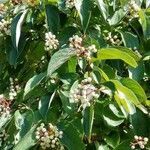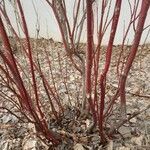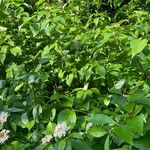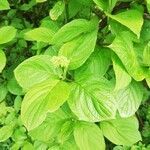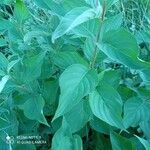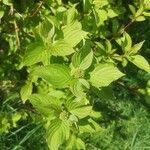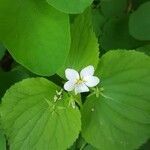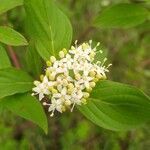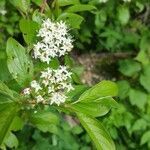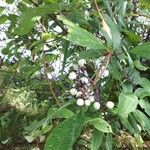Shrub 1–3 m, often forming dense thickets; twigs bright red; pith large and white; lvs lanceolate to elliptic or ovate, mostly 5–10 cm and a third to two-thirds as wide, acute to gradually acuminate at the tip, acute to broadly rounded at base, distinctly whitened beneath; lateral veins in well grown lvs 5–7 to a side; infl flat or slight convex; fr white (reputedly sometimes blue), 7–9 mm; stone brownish-black, with 7–9 vertical yellow stripes; 2n=22. Streambanks and moist woods; Nf. to Alas., s. to Pa., Ind., Ill., and n. Mex. May–Aug. Pubescence of the lower lf-surface typically sparse and strictly appressed, that of the twigs minute and mostly appressed. (C. baileyi, a form common about the Great Lakes and in s. Ont., with the pubescence partly spreading; C. interior, a chiefly western form, also found e. to Mich. and Ind., with the infl and twigs tomentose) (C. stolonifera)
A shrub which develops suckers. It loses its leaves. It grows 4 m tall and spreads 2 m wide. The branches are dark purple. The small branches are silky. The leaves are oval to sword shaped. They are smooth above and silky underneath. They turn orange to red in autumn. The flowers are white. The fruit are white with a green tinge.
